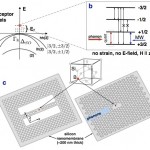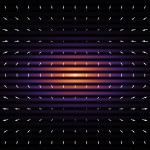Find out the latest developments in our bottom-up superconducting silicon work.
Blog
Yun-Pil Shim giving invited talk at the APS March Meeting
March 1st, 2014 | by admin | published in All, Blog, News
Charles Tahan selected to receive the Presidential Early Career Award for Scientists and Engineers (PECASE)
December 23rd, 2013 | by admin | published in Blog, News
President Obama today named 102 researchers as recipients of the Presidential Early Career Awards for Scientists and Engineers, the highest honor bestowed by the United States Government on science and engineering professionals in the early stages of their independent research careers.
Preprint: Relaxation of excited spin, orbital, and valley qubit states in single electron silicon quantum dots
January 25th, 2013 | by admin | published in All, Blog, Preprints, Quantum Computing

We review and expand on previous work that treats relaxation physics of low-lying excited states in ideal, single electron, silicon quantum dots in the context of quantum computing. These states are of three types: orbital, valley, and spin. The relaxation times depend sensitively on system parameters such as the dot size and the external magnetic […]
The Physics arXiv Blog highlights the acceptor:Si quantum phonodynamics preprint
August 14th, 2012 | by admin | published in All, Blog, Press

The science of how light interacts with matter is called quantum electrodynamics or QED and the theory on which it is based is one of the crowning achievements of 20th century physics.
Today, it lies at the heart of an emerging technology called circuit-QED, in which photons trapped on a silicon chip are made to interact with superconducting devices called artificial atoms, which have various energy levels just like real atoms.
This is a promising tool for quantum computation. Circuit-QED devices manipulate quantum information as it is transferred from light to matter and vice versa. And the fact that this all takes place on a single chip allows unprecedented control.
But there is another way of doing this kind of quantum information processing that could be just as promising. Instead of relying on light, this uses quantum packets of sound called phonons.
physicsworld.com blogs about the phoniton
December 2nd, 2011 | by admin | published in All, Blog, Press
Condensed-matter physicists have their own particle zoo – a menagerie filled with familiar and exotic quasiparticles including old favourites like holes and phonons, and newer additions such as surface plasma polaritons. Quasiparticles are excitations in a solid that behave like tiny particles and obey quantum mechanics. A phonon for example, is a quantized sound wave that propagates through a crystal.
Now Charles Tahan and colleagues at the Laboratory for Physical Sciences just outside Washington, DC have shown that the interaction between phonons and electronic excitations in certain semiconductors can be described in terms of a brand new quasiparticle called the phoniton.
APS Focus: Vibrations and Electrons Team Up in New Quantum Entity
November 28th, 2011 | by admin | published in All, Blog, Press
Theorists propose an experiment to observe a “phoniton,” a novel hybrid of an electron and a quantum of vibration in a crystal lattice.
Vibrations in a crystal can combine with an electron in a new way to form a hybrid quantum entity, according to a team of theorists publishing in Physical Review Letters. They call it a “phoniton,” a particle that combines a phonon—the quantum form of vibrations—with a matter excitation, such as an electron that transits between two levels. The team also proposes a nanostructure that would support this quantum state and allow it to be observed.
Introducing the phoniton: A sound-based analogue of cavity-QED, a tool for controlling sound at the quantum level
November 28th, 2011 | by admin | published in All, Blog, Featured, Highlights, Nanotechnology, Papers, Phonitons, Research
Introducing the phoniton / accepted
October 29th, 2011 | by admin | published in All, Blog, News
“Phononiton” has become “phoniton” by negotiation with the editors of PRL. It’s etymologically cleaner. The good news is that our paper has been accepted for publication in PRL and the new term “phoniton” has been accepted as well. See our summary for more information.
BEC of light: 6th place physics breakthrough of 2010
December 26th, 2010 | by admin | published in All, Blog, News
In 2005 we predicted “quantum phase transitions of light.” It seemed crazy at the time. Check out number 6: Physics World reveals its top 10 breakthroughs for 2010.
Spookytechnology and Society
October 12th, 2007 | by admin | published in All, Blog, Essays, Highlights, Technology and Society

Spookytechnology and Society: Understanding and anticipating the second revolution in quantum-designed technologies Download the article this summary is based on: C. Tahan, Spookytechnology and Society, submitted for publication. The original preprint can be found on the arxiv (Oct 12, 2007): arXiv:0710.2537. • tahan.com/charlie: Technology and Society • Wikipedia: quantum physics, quantum entanglement, quantum computer Some early press on the preprint […]
